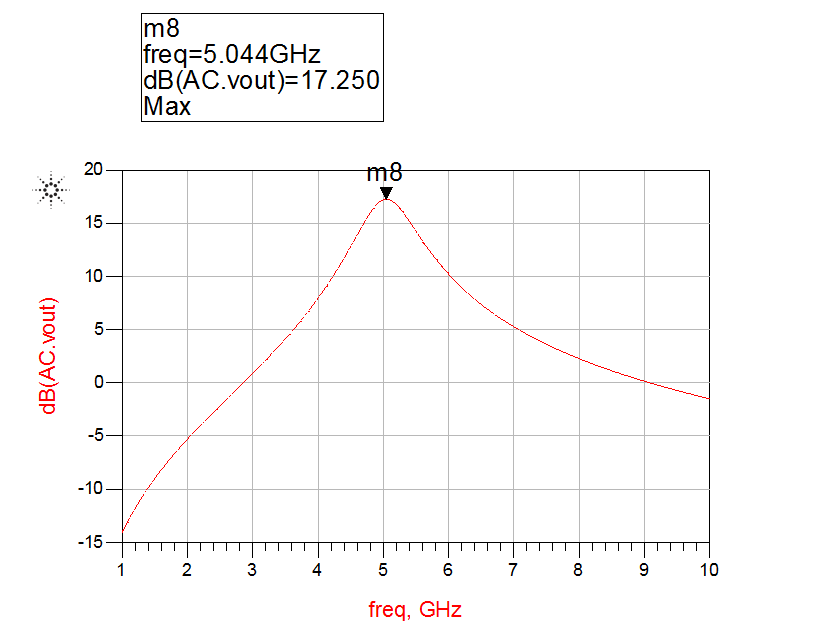Cant get correct S21 from Cg LNA
For a long time I have had a problem finding gain of LNAs which dont have output matching.
I set up circuit like this:
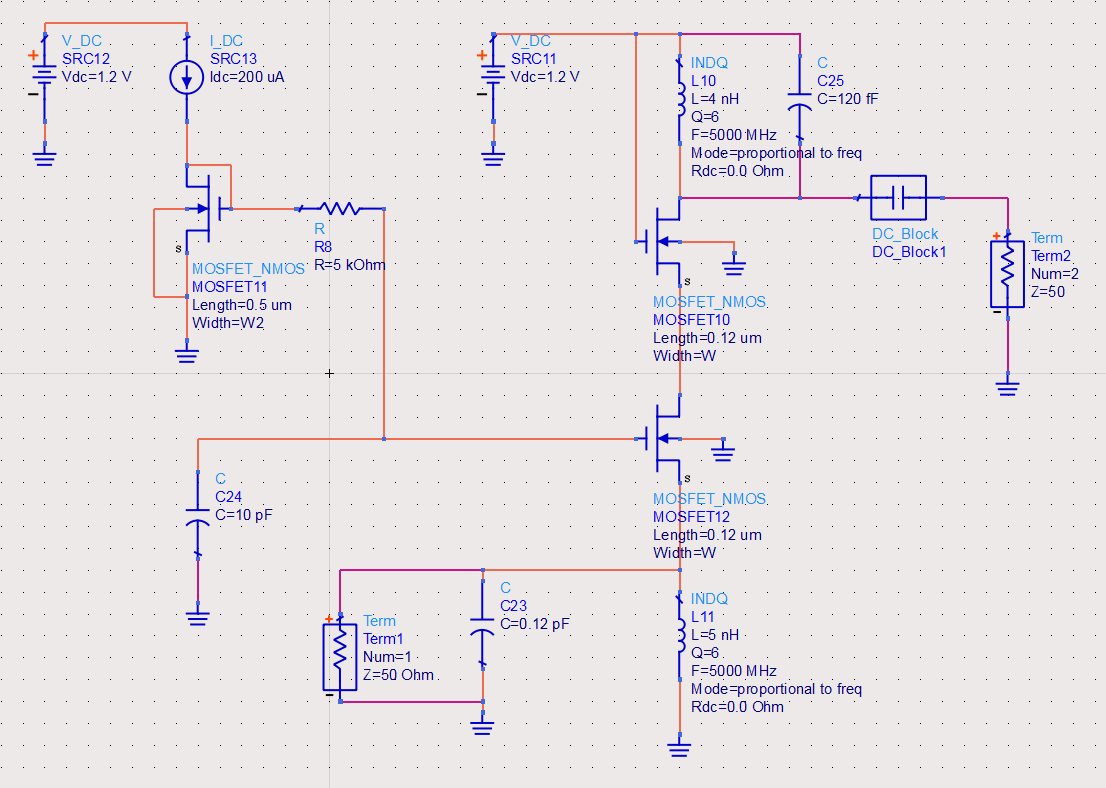
Everything is correct except S21.
But when i do transient simulation and set 5GHz sine wave i get correct gain like 20dB.
I am sure there is something wrong with setting up port 2 ! can any one correct this ?
Can you understand a definition of S21 surely ?
Show me the followings.
(1)Settings for Term1, Term2 and DC_Block1 in Transient Analysis.
If you would like to use same schematic in both SP and Transient Analyses, you have to use P1_Tone instead of Term as Term1.
I don't recommend to use DC_Block for Transient Analysis.
Use conventional capacitor in both SP and Transient Analysis.
(2)Drive Level in Transient Analysis
(3)Your definition of Gain in Transient Analysis.
Many people can not understand a definition of S21.
No I dont set term 1 and 2 in Transient analysis. I put sine wave with 50 ohm resistance and prob output node.
But with SP simulation i get wrong gain.
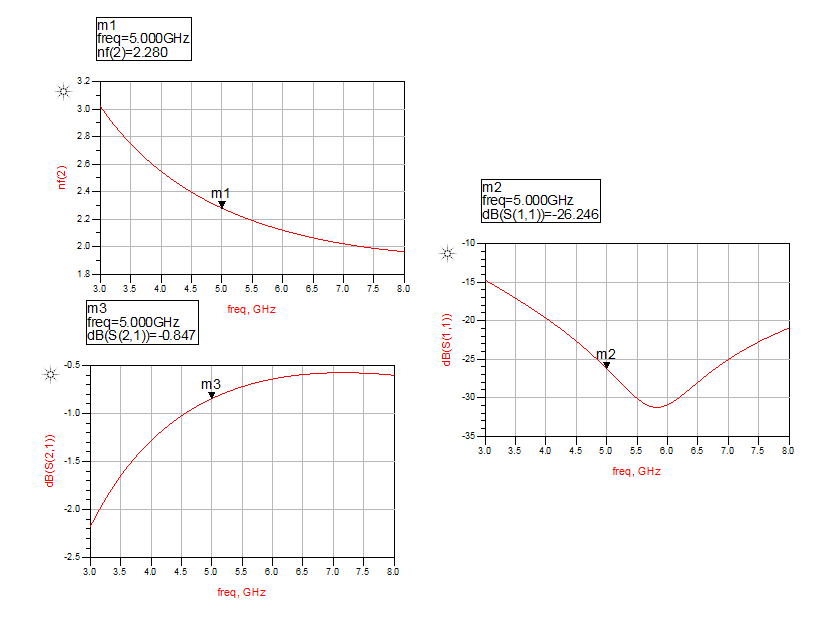
Sure you have suitable amplifier bias for small signal operation? Do you see 20 dB gain in transient analysis also with small input signal, e.g. 1 mV?
yes i see it when I apply sine wave in 5GHZ !
Vamp =1mv
I think the problem is 50 ohm but i dont know how can i can remove that loading effect.
I even used a buffer but gain wrong result
? Do you say the transient simulation is performed with a different load?
Transient simulation results
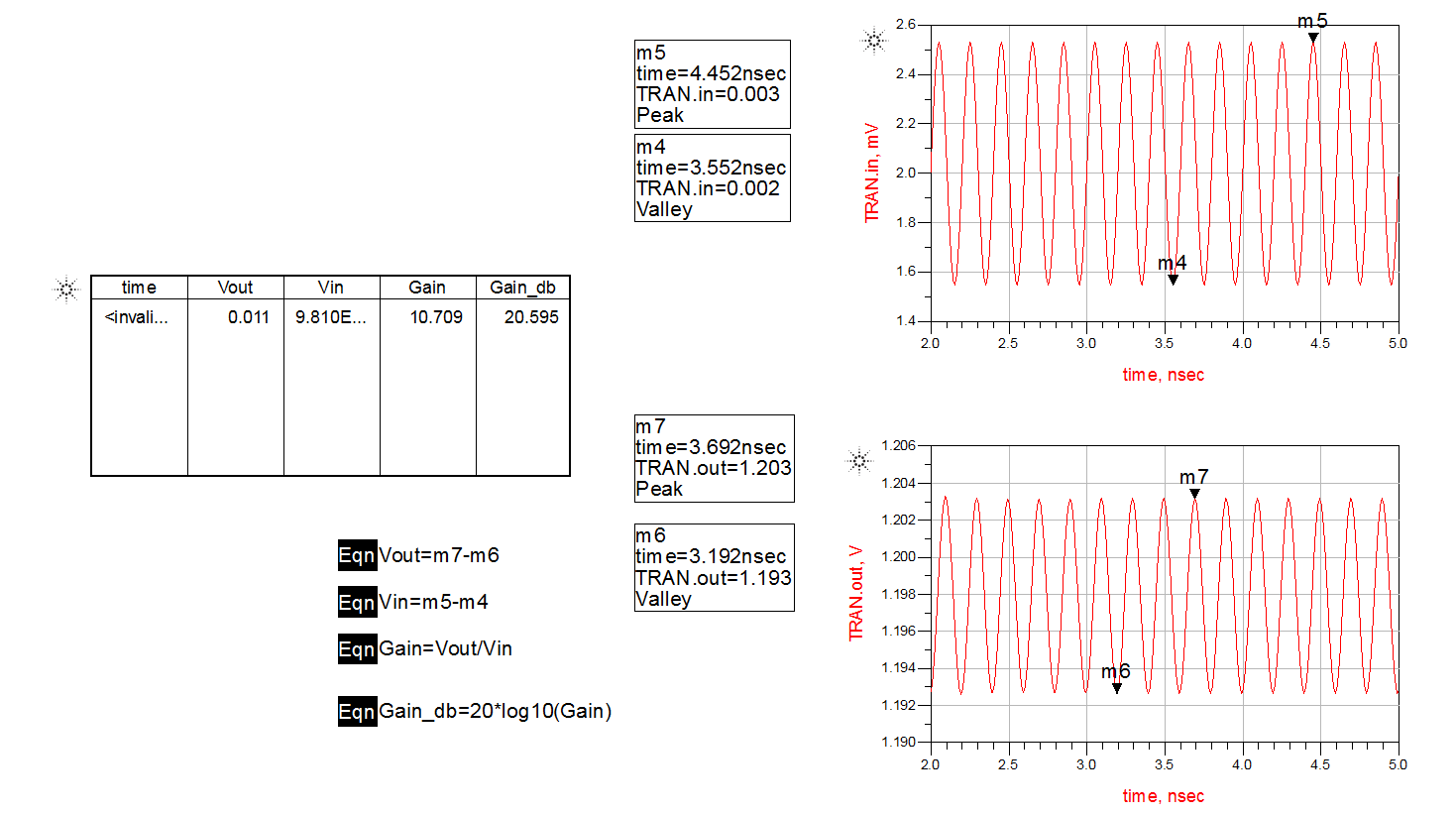
I want to get same result because we dont have 50 ohm on the next stage. We will have only mixer.
But I dont know how can i set up the simulation
The load should be mixers load which is capacitance load.
I cannot define capacitive load for port2
Simply you can not understand a definition of S21.
You have to use AC Analysis, since you don't have load in transient analysis.
Have to agree technically with pancho_hideboo.
S21 is gain with 50 ohm source and load impedance. If the load is considerably different from 50 ohm, S21 doesn't give the gain. Nevertheless you can calculate the gain for arbitrary loads by putting the other S-parameters into the calculation.
Of course you need an exact load impedance specification to determine the actual gain.
What kind of mixer do you drive with the amplifier? It's input impedance might strongly depend on the presence and level of a LO signal, also the succeeding load.
I totally get what u say. Imagine u have a gilbert mixer. So the lna output drives a transistor gate. So here i wont have S21 at all bc I dont have 50 ohm load. Then i cant find the gain of LNA with sp simulation. I can do AC or tran and check 5GHz.
As i said i have CL which is added to Cd which make LC tank with Ld
http://www.designers-guide.org/Forum...1266168115/1#1
S21 is different from conventional voltage gain even if Rsource is equal to Rload.
In your case, input impedance is fairly small since your circuit is common gate stage.
So denominator of conventional gain is also small.
On the other hand, denominator of S21 is constant regardless of input impedance.
Yes in understood.
Now imagine you have a circuit like this. how you set up a simulation to find s21 ?
I can not understand what you want to mean at all.
Can you understand S21 surely ?
S-parameters are not required in characterization inside IC at all.
Ok. I get it, so correct me if I am wrong:
Because it is in IC so we don't have output matching for LNA since it is connected directly to the mixer. Therefore in this case measuring S21 is meaningless.
So what we do is only set the input matching and check the nf and in order to see the gain of LNA we set up a AC simulation.
Back to original topics of this thread.
Your S21 is correct.
Simply you can not understand S21 at all.
That's all.
Matching has no relation at all.
However S21 is no useful.
I can not understand what you want to mean at all.
I will do the following.
Input Condition : P1_Tone with large and small signal power.
Output Condition : R//C pararell equivalent circuit or s11 data component item which is evaluated by mixer alone
http://edadocs.software.keysight.com...ageId=82848121
DC_Block : 10pF
Then invoke HB and AC analysis.
To evaluate NF, I use VCVS and Rout=50 with gain=2 to map output voltage to output port=50ohm.
Here I use SPNoise or HBNoise analysis.
Input Condition : P1_Tone with large and small signal power.
Output Condition : R//C pararell equivalent circuit or s11 data component item which is evaluated by mixer alone
http://edadocs.software.keysight.com...ageId=82848121
DC_Block : 10pF
Then invoke HB and AC analysis.
To evaluate NF, I use VCVS and Rout=50 with gain=2 to map output voltage to output port=50ohm.
Here I use SPNoise or HBNoise analysis.[/QUOTE]
like this ?
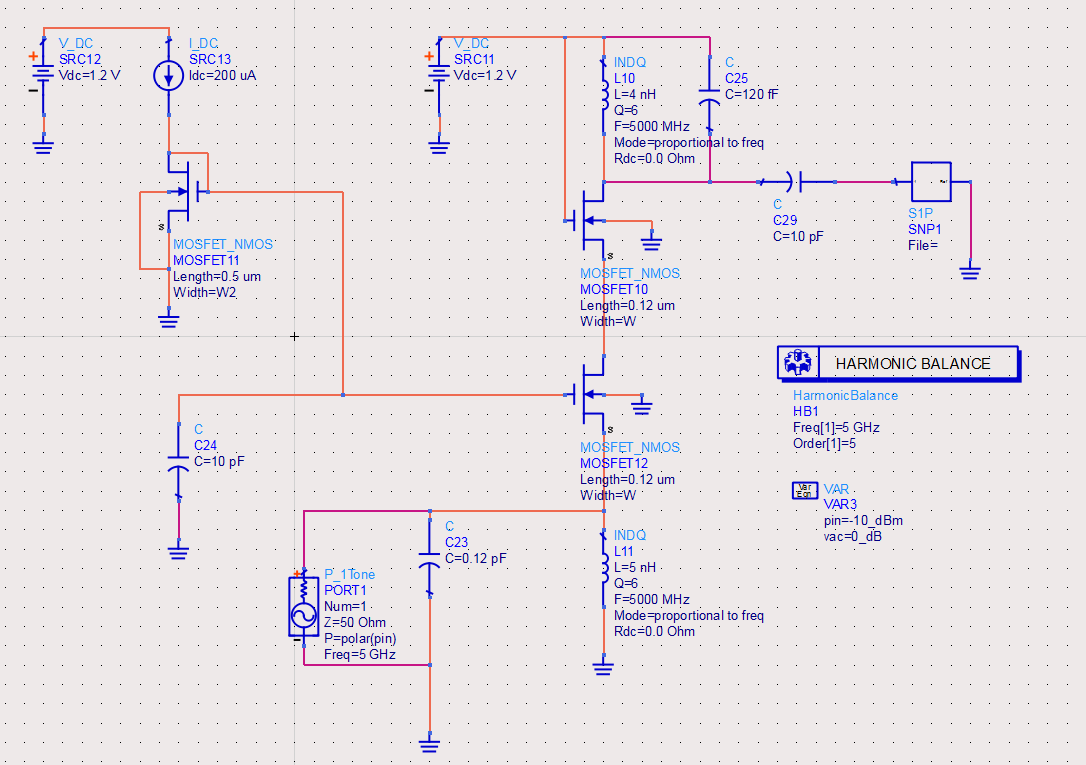
However I am not familiar with S1P block !
I dont know which file should I import.
As a final result I get S11 and NF from sp simulation with Term1 at the input and Term2 at the output:
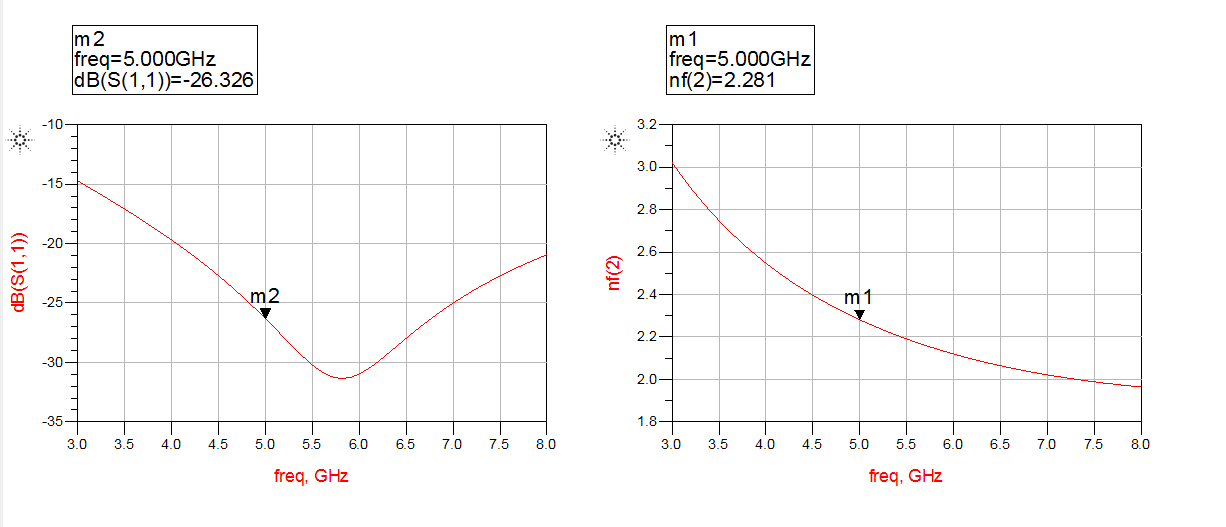
and For the gain i used AC source at the input with 50ohm resistance. For the putput I used load capacitance which is the input cap of mixer.
